ANDEGAVENSE (DC) Desvaux, 1818
Synonyms :
Crassula andegavensis De Candolle (1815) / Sedum caespitosum var. andegavense (De Candolle) Rivas Goday & Bellot (1949)
Sedum atratum Bast. ex Lamarck & De Candolle (1815) (nom. illeg.)
Crassula globulifolia Moris (1827)
Sedum commutatum Sprengel ex Steudel (1841).
Distribution : Spain, Portugal, central and southern France, Corsica, Sardinia, northern Africa (Morocco).
Description (according to IHSP 2003) :
Small annual herbs, almost completely glabrous, with erect stems, sometimes branched from the base, to 6 (-10) cm tall.
Leaves alternate, subopposite and densely imbricate on young plants, obovate to (sub-) globose, sessile, rounded, terete, dull, dark green, to 5 mm.
Inflorescences cymes with (1-) 2 (-3) usually few-flowered erect cincinni, bracts oblong, to 2 mm, pedicels 1 - 2 mm.
FIowers 4- or 5-merous with 4 or 5 stamens, sepals broadly sessile, basally connate for 0,5 mm, broadly ovate, rounded or obtuse, 2 - 2,5 mm, petals basally free, ovate-lanceolate, acute or shortly acuminate, white or pinkish, ± 3 mm, filaments white, anthers red or yellowish.
Cytology: 2n = 50.
Closely related to S. candollei and S. pedicellatum ('t Hart & al. 1999). The 3 species form a comparium and have been classified in Ser. Pedicellata.
S. andegavense is strictly protected in France.
Sedum andegavense in the schist quarry at Trélazé, Anjou, France :
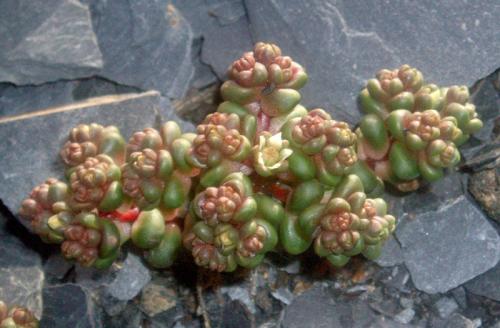
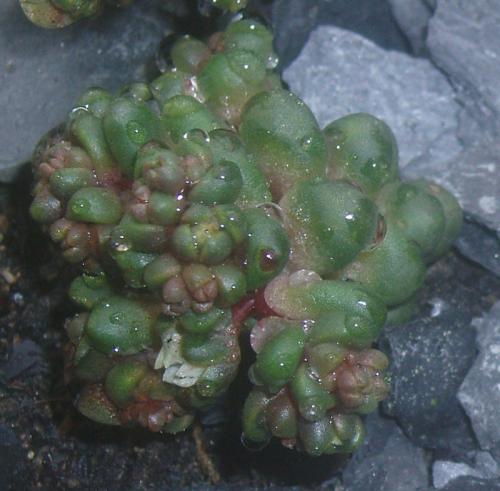
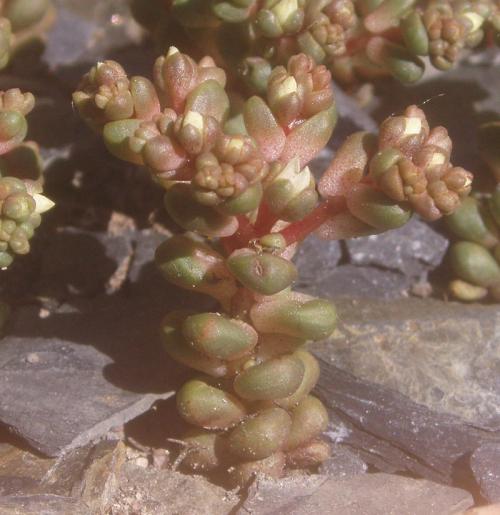
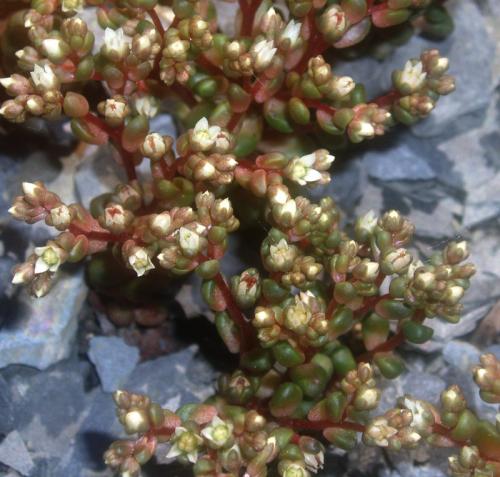
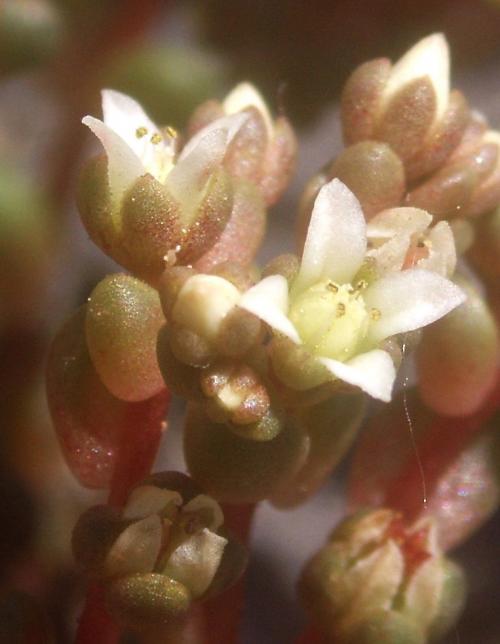
Photos David Sorin
In N Portugal - note the rogue S. brevifolium seedling :
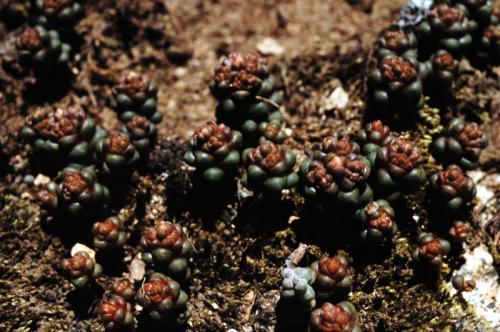
-
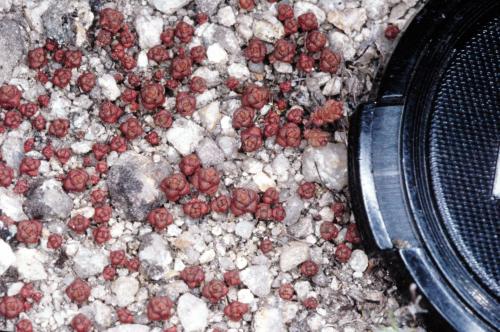
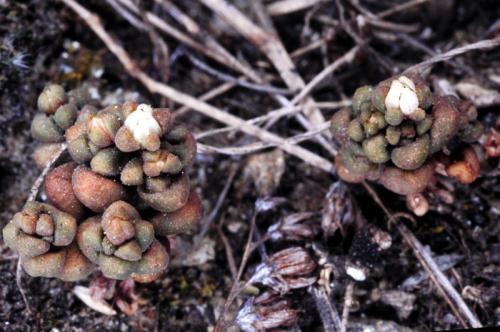
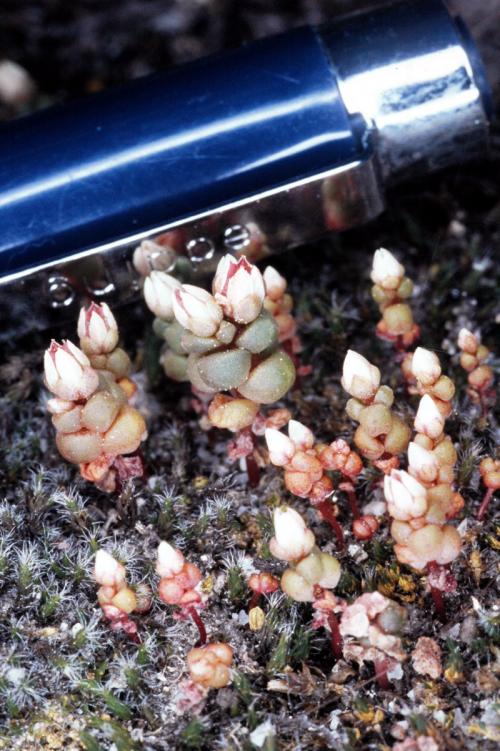
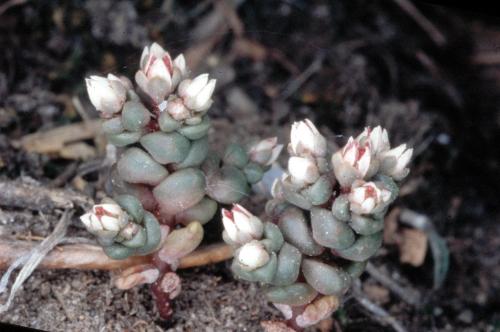
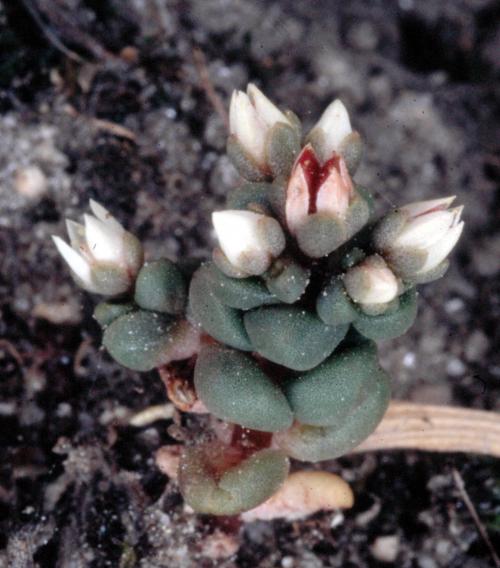
Plants in cultivation :
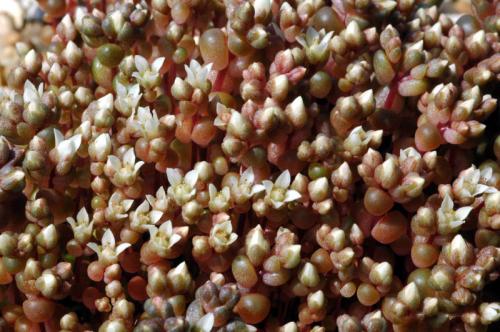
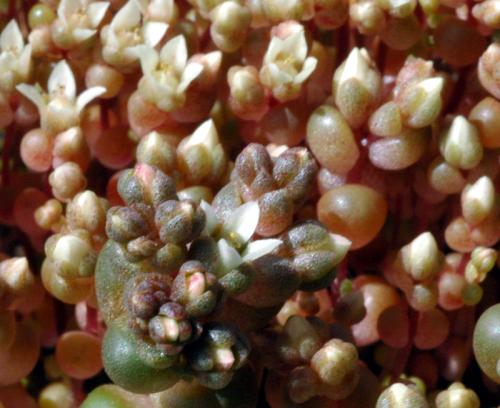
Photos Ray Stephenson
To see more photos :
Sedum poussant en carrière d'ardoise de Trélazé, Anjou, France / Sedum in the schist quarry at Trélazé, Anjou, France by David Sorin